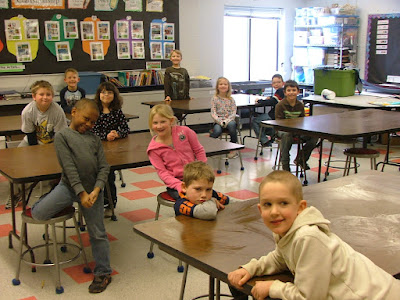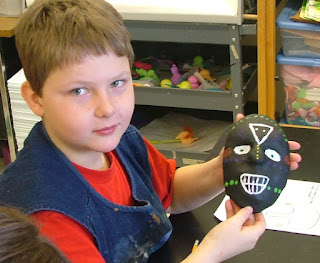Check it out! Even my 1st Graders know how to do the 2 Minute Cleanup!
Before: 2 Minutes on the Clock. Ready, Set, Go!
After: When the timer goes off, I count down slowly from 10. Everyone is in their seats with heads down by the time I get to 1. Jobs are completed and the room is looking good! (Although, I do tell them that Sink Captains are allowed to still be finishing up since I know that is a big job)!
This works for almost all classes, almost every time! They just love to race the clock. I offer them an extra half box on our "Bonus Day" chart if they can do it with less than 3 mistakes. Running and yelling will disqualify the class. I gotta admit... I have fun at cleanup time too!
I usually save this for days when we have a lot to clean or set up. Classes that have another class after them must not only clean up but set tables up for the next class! Supplies each table needs for the next class are listed on the board. Each table knows how many kids sit at their table in the next class and will put out the appropriate number of supplies!



















































